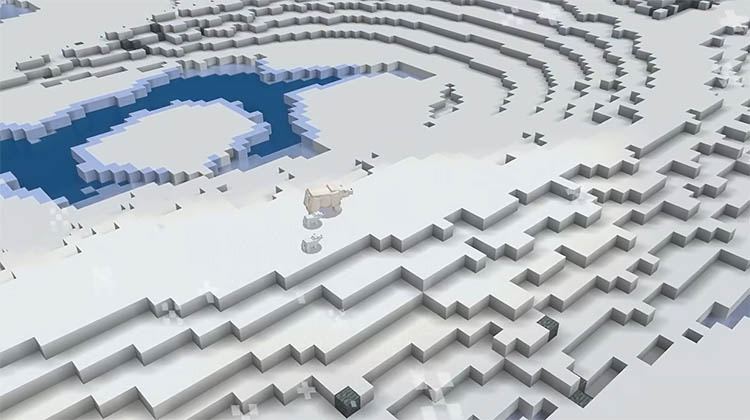Serious Play

Kids like video games and capturing the engagement they usually reserve for gaming and directing it towards learning was gamification’s hope.
The idea is mature now and it is looking like, with the right technologies, content and structuring, gamified lessons are delivering on their promise.
The lingering fear has been that, while fun, using video games in class might not be as productive as it should be. However, the way to do it well and keep gamified learning on track and curriculum focussed is being pinned down.
Queenslander Jason Lane, Director of e-Learning, Villanova College is long on Minecraft and says it’s a powerful tool if used in the right way and one that he has seen make long lasting impact on his students.
“What's fascinating is that even years later, my students still vividly remember their learning experiences through Minecraft. They often recall moments like, 'I still remember when we used Minecraft to design better library spaces two years ago' and similar instances. This demonstrates the long-lasting impact of the learning experience, which remains ingrained in their memories, unlike many other moments in their educational journey that are casually forgotten,” Lane says.
“When we informed students about our plan to use Minecraft Education for learning about climate change and adaptation, their interest in the subject was immediately piqued. We assigned extension tasks for them to complete outside of class, and their level of engagement was remarkably high. This highlights the effectiveness of Minecraft Education in fostering interest and curiosity in the learning process.
“An interesting observation I made was that students were enthusiastic about showcasing their Minecraft skills and abilities to their peers. In other circumstances, some students might be shy to share their talents, but with Minecraft Education, even the quieter students were eager to demonstrate their skills and help others. Additionally, students thoroughly enjoyed sharing their learning experiences with teachers.”
The key to successful gamification in the classroom is finding the right balance between fun and learning.
“While using games like Minecraft can be engaging and exciting for students, it's important to ensure that the educational objectives are not overshadowed by the act of playing a game. Sometimes the phrase "playing Minecraft" can also mislead students, therefore I say, "we are using Minecraft in this activity to learn differently.”
“To do it well, as teachers, we need to establish clear learning goals and success criteria for the activity, and clearly communicate these expectations to students. By setting these parameters, students understand the purpose of the activity and how it connects to their broader learning. Lesson timing is also important. I usually structure a lesson with a game-based and entirely offline element, allowing part of the lesson to involve a Minecraft Education game or task followed by a reflective response or pair share activity,” he says.
Teachers should also provide structure and ongoing supervision, including actively monitoring student progress, and facilitating discussions about the learning content.
“It is useful to nominate one or two students as game monitors, because most students have a deeper understanding of Minecraft than teachers. Interestingly, students hold other students to high account if they are tasked and enabled to do so. All these measures help teachers maintain and regulate on-task behaviours, whilst challenging any behaviours that are contrary to the learning goals."
Relevance is important too and Minecraft Education has a vast library of in-game lessons grouped as Subject Kits. Many of these pre-built lessons state learning objectives, guiding questions and additional pre and post activities to reinforce student learning. Teachers do not need to develop their own lesson content - they can start using these curated and tested in-game resources to ensure the use of Minecraft is purposeful and directly supports student learning.
Extensive work has been done by influential Australian educators like Bron Stuckey to map Minecraft games and lessons to the Australian Curriculum. This document, https://education.minecraft.net/en-us/australia shows teachers how to use Minecraft in accordance with the major strands of the Australian Curriculum including English, Mathematics, Science, Humanities and Social Science, The Arts, Technologies, Health and Physical Education, and Languages.
Frozen Planet II
New release Frozen Planet II is the result if a collaboration between BBC’s Frozen Planet series and Minecraft Education. Students can explore the landscapes and creatures of the Frozen Planet II worlds and it’s the first-time Minecraft players can be an animal character and experience the world from their perspective.
Travis Smith, K-12 Education Industry Lead at Microsoft A/NZ says, “With Frozen Planet II, we’ve introduced an innovative approach where players can see the world from an animal’s perspective – in the immersive learning tool, players can ‘adopt’ the character of different animals in a frozen habitat and the gameplay helps them experience the frozen worlds from their perspective. For example, a mother polar bear leading her cubs to safety. Players can also become researchers on location, tasked with documenting animal behaviour to inform environmental research.
“The teaching guide includes a range of lesson plans and activities on Frozen Planet II Minecraft worlds, as well as tips and tricks for using Minecraft Education effectively in the classroom. For example, educators can use the tool to teach students about animal adaptations by having them explore different ecosystems and observe how animals have evolved to survive in those environments. The guide also includes resources for teaching about climate and sustainability, such as getting students to build a new home that uses techniques to save energy and protect the environment,” says Smith.